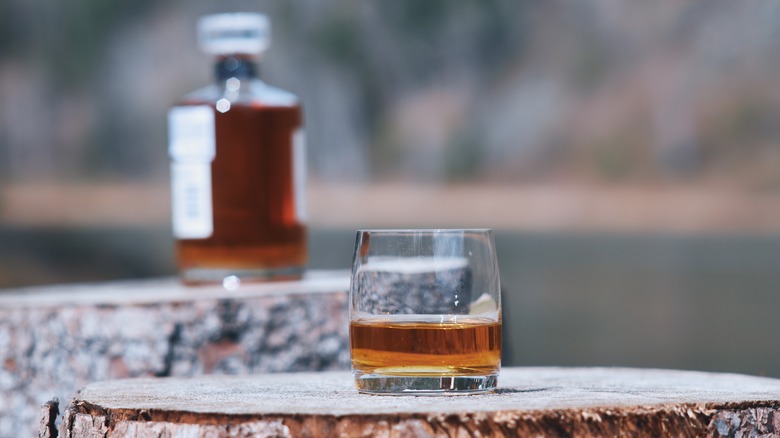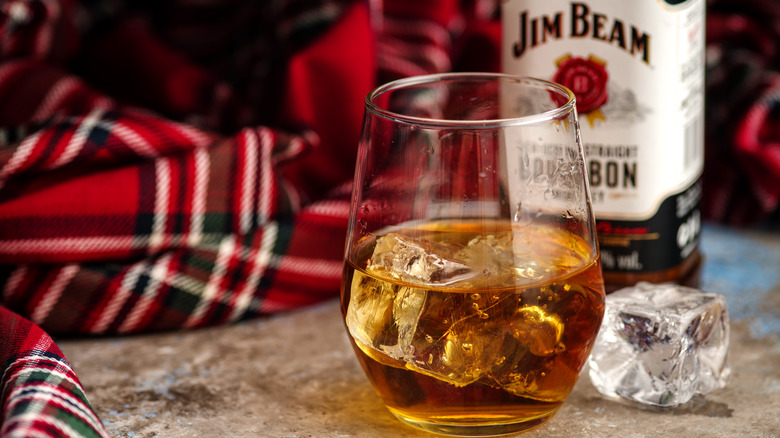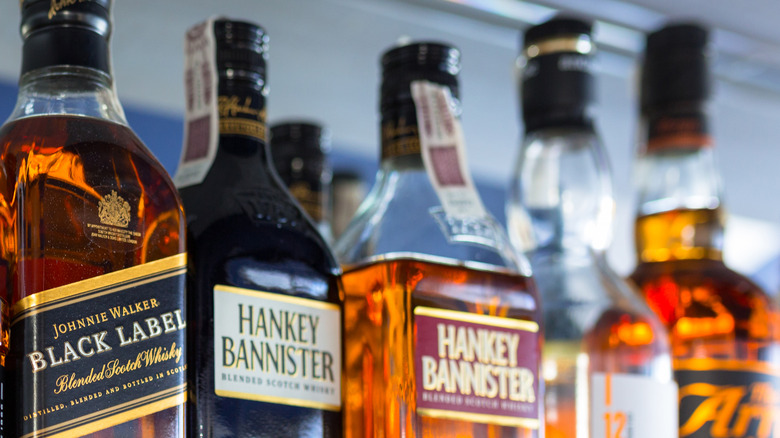The Vast Difference Between Whiskey And Whisky, Explained
Whether you drink it or not, you know it by sight: the distilled grain spirit with its quintessential caramel-brown hue. But sometimes you see it labeled as whiskey — and other times as whisky. So which is it: whiskey or whisky? And is there a difference?
The answer is that it's both, depending on which type of liquor you're referring to ... and a spelling discrepancy isn't the only difference. The presence of that "e" hinges on the country of origin of the particular spirit. Essentially, it all comes down to one thing — location, location, location — and that determines everything else.
"Whiskey" generally implies that the spirit was made and distilled in either America or Ireland (plus a small number of producers in Mexico) — while "whisky" typically refers to spirits that come from Scotland, Japan, Canada, Australia, South Africa, and many European countries as well as the bulk of producers in Mexico. Several types of whiskey (or whisky) fall under each larger subcategory, and there are many nuances within those varieties — so the differences are vast and many.
Whiskey: American and Irish
What's considered whiskey is mostly American and Irish (although there are exceptions to the rule, like Maker's Mark and some Tennessee whiskey brands that use the "whisky" spelling). There are various origin-based rules and laws that determine the way whiskey is made, so each variety is differentiated by things like the type and ratio of grains used, how many times it's distilled, and how long it's aged.
Within the American whiskey category are varieties like rye, bourbon, single malt, Tennessee, wheat, and corn whiskey. These are all made from varying blends of fermented grains like corn, rye, wheat, barley, malt, and more. Some, like bourbon, are aged in specific types of barrels; others, like Tennessee, are charcoal-filtered. Most American whiskey is distilled twice and aged for a minimum of two years.
Meanwhile, Irish whiskey is made primarily with barley and typically distilled three times. It's also aged for longer, at a minimum of three years. Irish whiskey is often characterized as smooth, flavorful, and slightly less sweet than its other whiskey counterparts, which tend to be smokier and less smooth.
Whisky: Scottish, Japanese, Canadian, and more
Whisky is a bit of a broader category that includes fermented grain spirits from more parts of the world, with most of its various origins taking after traditional Scottish practices. Scotch whisky is the oldest and most prominent of the bunch, and there are even differences between Scotland's many whisky regions.
Most whiskies go through distillation twice and are aged in wooden barrels for at least three years. Scotch whisky and Japanese whisky are similar in that they are both made with primarily malted barley and follow the same distillation process. Some are peated, which means these varieties tend to be less sweet and have smoky or fiery notes — depending on the individual region and brewery, of course. Canadian whisky typically uses more rye in its grain blends. Indian whisky actually began as a molasses-derived spirit that has since evolved to single-malt production.
Other countries that produce whisky include Australia, France, Spain, Germany, England, Taiwan, and many more — again, each with their own subtle differentiations that all fall under the same umbrella category.



